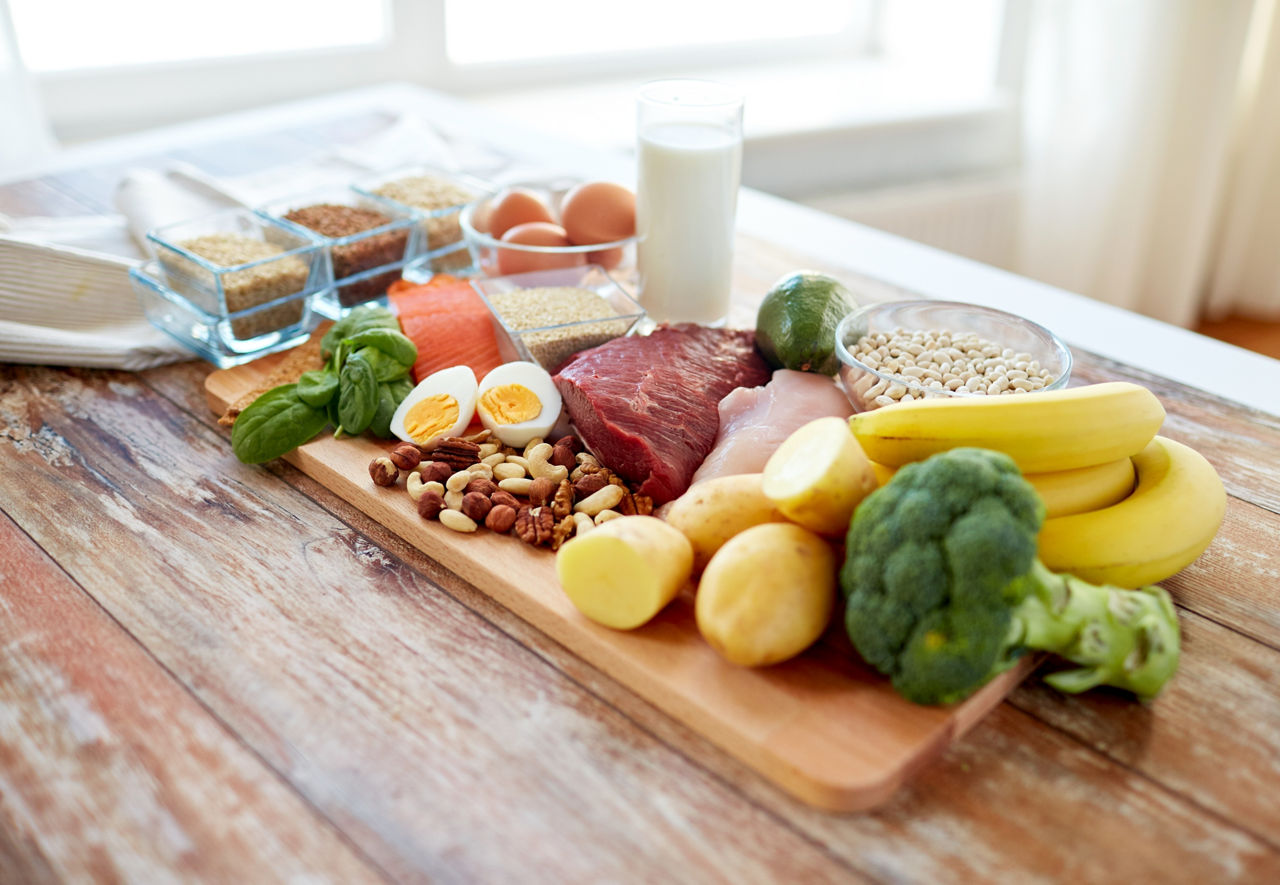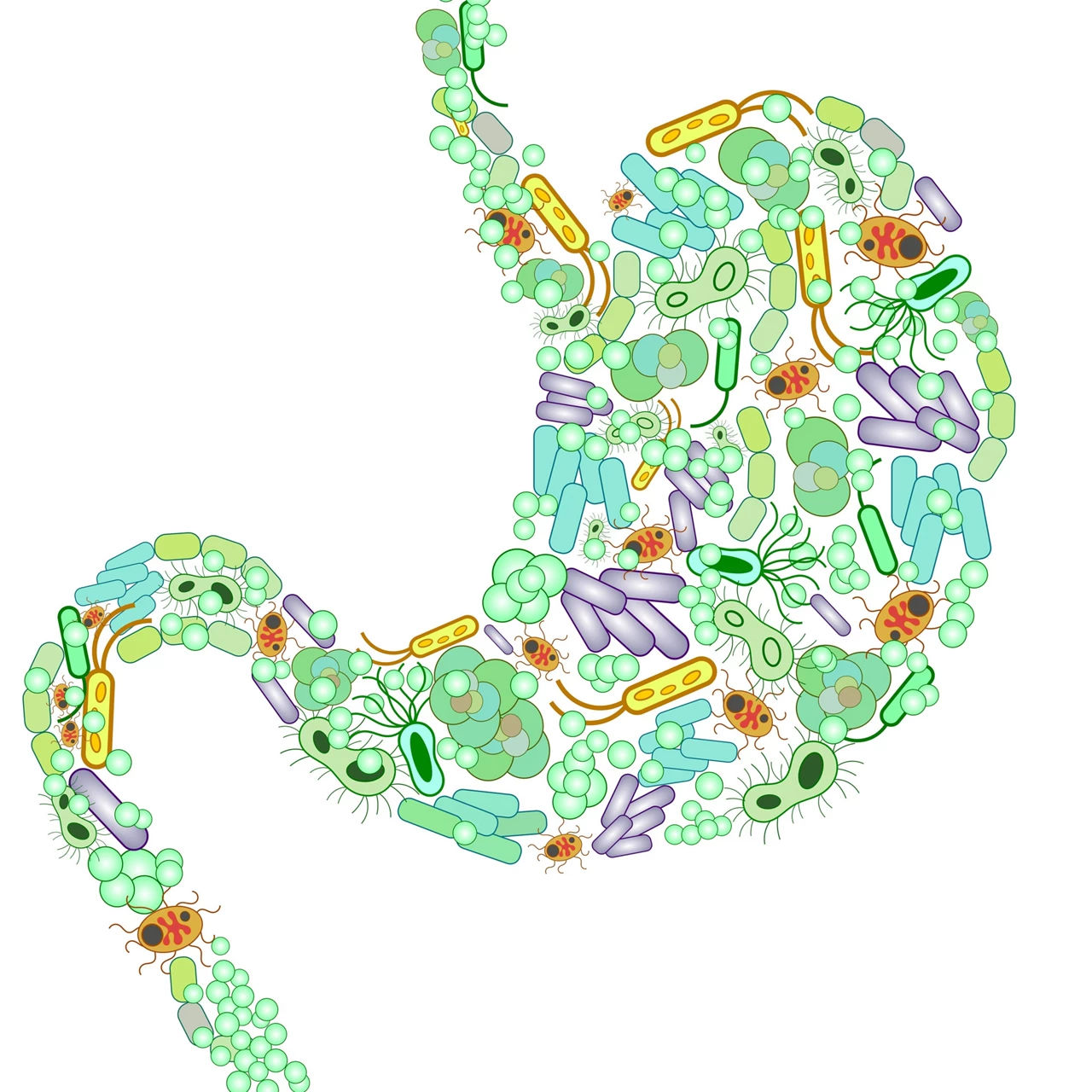Latest Irish dietary guidelines for toddlers and pre-school children - Nutrients
The Food Safety Authority of Ireland (FSAI) published food based dietary guidelines for 1-5 year old children in June 2020.1 This is the first time a scientific report addresses the nutritional needs of toddlers and pre-school children living in Ireland. A secondary analysis of the Irish National Pre-School Nutrition Survey (NPNS) which identified typical meal patterns and dietary intake targets for this age group informed these guidelines.2 Iron, Vitamin D, Eicosapentaenoic Acid (EPA) and Docosahexaenoic Acid (DHA) were identified to be the nutrients at risk of inadequate intakes in this age group. The FSAI provided recommendations to address these nutritional inadequacies.

Please log in to access this content
Simply log in or register to Nutricia Academy today to access this content as well as a host of other trusted education resources.

Iron
Functions of Iron:
Iron is a mineral used by the body in many metabolic pathways such as oxygen transport, electron transfer, oxidase activities and energy metabolism. Ensuring adequate intake of iron in early childhood is important for healthy growth and development.3 Iron contributes to normal cognitive development of children.4
Iron Deficiency:
Prolonged iron deficiency is associated with poorer cognitive, motor, and behavioural outcomes which can carry through to adulthood.5,6 Iron deficiency may also adversely impact children’s growth and immune function.7
Sources of Iron:
There are two different types of dietary iron: haem iron and non-haem iron. Haem iron is found in meat, fish and poultry and is more readily absorbed by the body. Non-haem iron is found predominantly in plant-based foods such as cereal, vegetables, nuts, and pulses. It’s important to note that while these plant-based sources will play an important role in diet patterns which do not include meat or fish, non-haem iron absorption can be influenced by dietary factors. For example, phytate, polyphenols, calcium and cow’s milk inhibit the absorption of non-haem iron while ascorbic acid (vitamin C), meat and fish increase the absorption of non-haem iron.8,9 Iron-fortified breakfast cereals, breads and fresh and processed meats are the main sources of iron in young children in Ireland.1
What the FSAI Guidelines recommend to ensure adequate intake of iron:1
- To include 30g of red meat approximately three times a week for all children ages 1-5 years
- To incorporate an iron-fortified breakfast cereal (containing ≥12 mg iron/ 100g) five days a week
- To consume vitamin C containing fruit, vegetables or diluted juices with iron-fortified cereals, and non-haem iron sources such as beans, lentils, and eggs to enhance iron absorption
- For smaller children (aged 1-3 years, growing at ≤ 25th percentile) where dietary iron intake is likely to be inadequate:
- To use an iron-fortified full fat milk or formula (containing at least 1mg of iron/ 100ml) OR
- A low dose iron supplement (7mg) given 4 days a week*
* (Current availability of a low dose iron supplements is limited in Ireland)
Vitamin D
Functions of Vitamin D:
Vitamin D is a fat-soluble vitamin which plays an essential role in regulating calcium and phosphorus metabolism and is important for healthy bone growth throughout childhood. Vitamin D also contributes to normal function of the immune system.10,11
Vitamin D Deficiency:
Low vitamin-D status can negatively impact bone mineralisation. Prolonged low status may adversely affect bone mineral density and contribute to the risk of osteoporosis later in life.12 Severe deficiency increases risk of rickets in children.13
While data from the NPNS indicates that 1-5 year old children in Ireland do not meet optimum intakes of vitamin D, during the summer most Irish children get sufficient vitamin D.1,2 However, during the winter months for many Irish children (40-45%) dietary sources alone are not enough to maintain the blood levels needed to ensure enough vitamin D for good bone health.1 Irish children, therefore, are at risk of low vitamin D status during the winter months.
Sources of Vitamin D:
Vitamin D can be obtained from two different sources: sun exposure and diet. Getting vitamin D from food is of particular importance because in Ireland the ultraviolet B (UVB) rays needed for vitamin D skin synthesis are very low during the winter months. This means little to no vitamin D is produced in the weaker sunlight. Furthermore, it is advised to protect the skin from the harmful effects of UVB through SPF and staying out of direct sunlight.14 However, foods that naturally contain vitamin D are limited. Small amounts of vitamin D can be found in meat, dairy and eggs but key sources of vitamin D for children ages 1-5 in Ireland include vitamin D fortified milks, yoghurts, and vitamin-D fortified cereals.1
What the FSAI Guidelines recommend to ensure adequate intakes of Vitamin D:1
- To administer a low-dose vitamin D only supplement of 5μg to all 1-5-year olds in Ireland from Halloween to St Patrick's Day
- To incorporate breakfast cereals and milks fortified with vitamin D which will contribute to the requirements
Docosahexaenoic Acid (DHA) & Eicosapentaenoic Acid (EPA)
Functions of DHA & EPA:
DHA and EPA are omega-3 polyunsaturated fatty acids (PUFA’s), they are a type of dietary fat. Omega-3 fatty acids confer a structural function to the nerve tissues and retina.15 DHA contributes to normal brain development and during the first two years of life, the developing brain accumulates this fatty acid in large quantities, this continues during late childhood.16 There is increasing evidence to indicate a link between DHA and EPA and cognitive development such as language development in children as well as a decreased risk for the development of chronic diseases such as cardiovascular disease by decreasing atherosclerosis and increasing HDL concentration.15, 17, 18
DHA & EPA Deficiency:
Due to the potential role of DHA and EPA in the reduced risk of CVD development deficiency and long-term inadequate intakes of DHA and EPA may be linked with an increased risk for developing cardiovascular disease. In Ireland, 1-4 year olds do not meet the recommended intakes of EPA and DHA.19
Sources of DHA & EPA:
Oily fish and seafood are the main dietary sources of these omega-3 fatty acids. DHA and EPA are also found in fish oil supplements, and fortified foods. Plant-based foods containing DHA and EPA include flaxseeds, hemp, walnut, canola, and rapeseed oil. To produce the benefit, alpha-linoleic acid found in plants must be converted to EPA and DHA by the body however, since the body has limited ability for this conversion direct sources of DHA and EPA provide the richest sources.20
What the FSAI Guidelines recommend to ensure adequate intakes of DHA & EPA:1
- That fish should be included in the diet of 1-5 year olds at least once a week
- White fish can be consumed twice a week while oily fish can be included once a week
- Where fish and seafood are not consumed, flaxseed, hemp, walnut, and canola or rapeseed oil will provide DHA and EPA
- Foods fortified with, or supplements containing, EPA and DHA could also be included in the diet
- FSAI (2020). Food Safety Authority of Ireland Scientific Recommendations for Food-Based Dietary Guidelines for 1 to 5-year-old in Ireland. Available at www.fsai.ie
- IUNA (2011). National Pre-School Nutrition Survey. Available at www.iuna.net
- Scientific Advisory Committee on Nutrition (2010). Iron and Health. London. Available at: www.gov.uk
- EFSA (2009). Scientific Opinion on the Substantiation of a health claim related to Iron and cognitive develop ment of children pursuant to Article 14 of Regulation (EC) No 1924/2006. Available at www.efsa.europa.eu
- Lozoff B, Georgieff MK. Iron deficiency and brain development. Seminars in pediatric neurology.2006;13(3):158-65
- Lozoff B, Smith JB, Kaciroti N, Clark KM, Guevara S, Jimenez E. Functional significance of early-life iron deficiency: outcomes at 25 years. J Pediatr. 2013;163(5):1260-6.
- Wintergerst E, Maggini, S & Hornig, DH Contribution of selected vitamins and trace elements to immune function. Ann Nutr Metab. 2007;51(4):301-23.
- EFSA: (2014) Scientific Opinion on the substantiation of a health claim related to vitamin C and increasing non haem iron absorption pursuant to Article 14 of Regulation (EC) No 1924/2006. Available at www.efsa.europ.eu
- EFSA: (2010) Scientific Opinion on the substantiation of health claims related to meat or fish and the improvement of non-haem iron absorption (ID 1223) pursuant to Article 13(1) of Regulation (EC) No 1924/2006. Available at www.efsa.europa.eu
- EFSA: (2015) Scientific Opinion on the substantiation of a health claim related to vitamin D and contribution to the normal function of the immune system pursuant to Article 14 of Regulation (EC) No 1924/2006. Available at www.efsa.europa.eu
- G. Mailhot, J. H. White. (2020) Vitamin D and Immunity in Infants and Children. Available at: www.ncbi.nlm.nih.gov
- Scientific Advisory Committee on Nutrition (2016). Report on Vitamin D and Health. Available at: www.gov.uk
- Munns CF, Shaw N, Kiely M, Specker BL, Thacher TD, Ozono K, et al. Global Consensus Recommendations on Prevention and Management of Nutritional Rickets. J Clin Endocrinol Metab. 2016;101(2):394-415.
- Department of Health Ireland 2019. Skin Cancer Prevention Plan. Available at: Skin cancer prevention FINAL.indd (assets.gov.ie)
- European Food Safety Authority Panel on Dietetic Products Nutrition and Allergies. Scientific Opinion on the substantiation of health claims related to docosahexaenoic acid (DHA), eicosapentaenoic acid (EPA) and brain, eye and nerve development (ID 501, 513, 540), maintenance of normal brain function (ID 497, 501, 510, 513, 519, 521, 534, 540, 688, 1323, 1360, 4294), maintenance of normal vision (ID 508, 510, 513, 519, 529, 540, 688, 2905, 4294), maintenance of normal cardiac function (ID 510, 688, 1360), “maternal health; pregnancy and nursing” (ID 514), “to fulfil increased omega-3 fatty acids need during pregnancy” (ID 539), “skin and digestive tract epithelial cells maintenance” (ID 525), enhancement of mood (ID 536), “membranes cell structure” (ID 4295), “anti-inflammatory action” (ID 4688) and maintenance of normal blood LDL-cholesterol concentrations (ID 4719) pursuant to Article 13(1) of Regulation (EC) No 1924/2006. EFSA Journal. 2011.
- EFSA: (2014) Scientific Opinion on the substantiation of a health claim related to DHA and contribution to normal brain development pursuant to Article 14 of Regulation (EC) No 1924/2006. Available at www.efsa.europa.eu
- Strain JJ, Davidson PW, Thurston SW, Harrington D, Mulhern MS, McAfee AJ, et al. Maternal PUFA status but not prenatal methylmercury exposure is associated with children's language functions at age five years in the Seychelles. The Journal of nutrition. 2012;142(11):1943-9.
- Strain JJ, Yeates AJ, van Wijngaarden E, Thurston SW, Mulhern MS, McSorley EM, et al. Prenatal exposure to methyl mercury from fish consumption and polyunsaturated fatty acids: associations with child development at 20 mo of age in an observational study in the Republic of Seychelles. The American journal of clinical nutrition. 2015;101(3):530-7.
- Y.M Lenighan, B. A. McNulty, N.F.C Devlin et al. (2013) Intakes of omega-3 polyunsaturated fatty acids in an Irish pre-school population.
- Conway MC, Mulhern MS, McSorley EM, van Wijngaarden E, Strain JJ, Myers GJ, et al. Dietary Determinants of Polyunsaturated Fatty Acid (PUFA) Status in a High Fish-Eating Cohort during Pregnancy. Nutrients. 2018;10(7).



